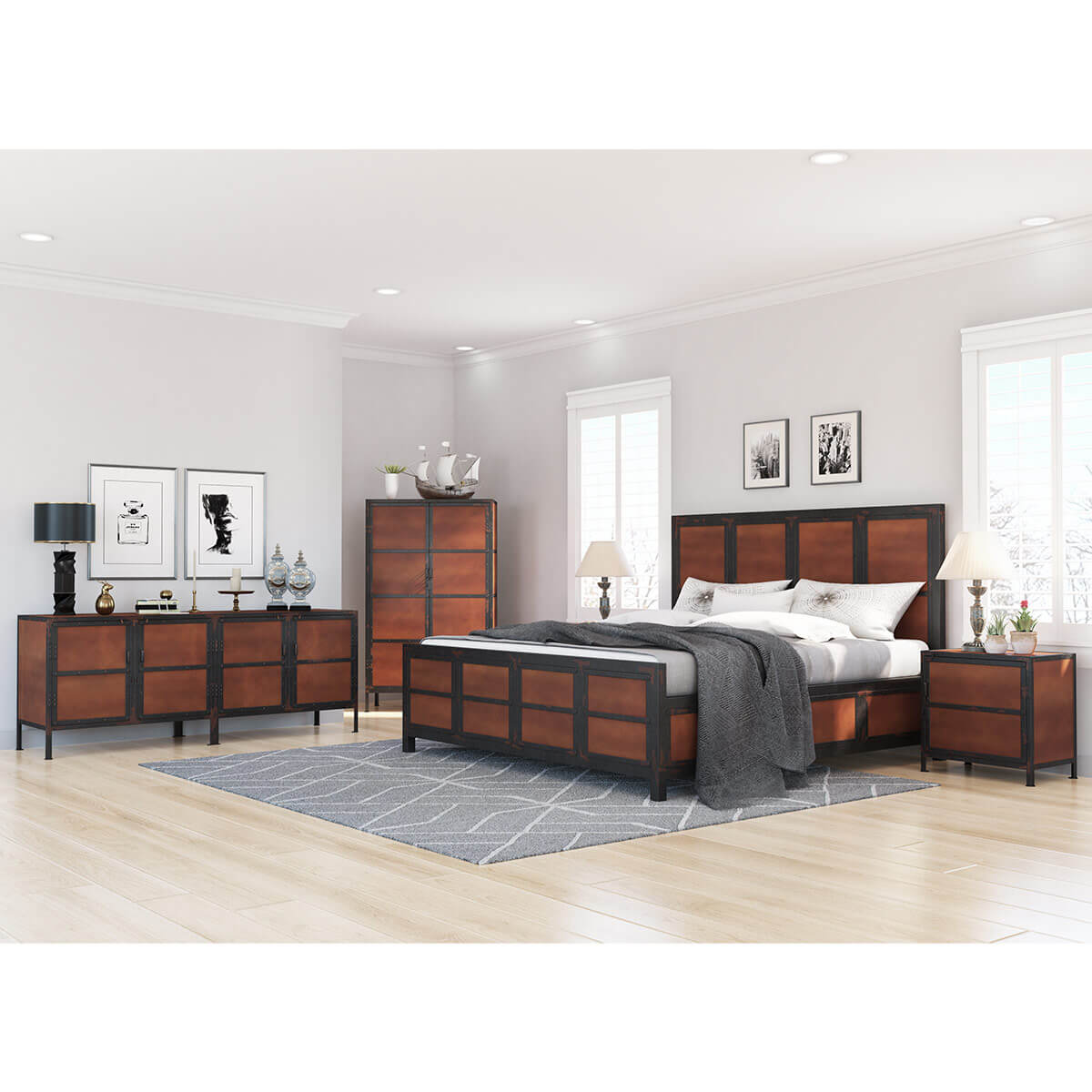All Categories
Featured
When decorating a home, choosing the appropriate furnishings design plays a vital role in shaping the setting of a space. Two of the most popular furniture designs are traditional and modern, each with its special features.
Traditional Furniture: Traditional furniture embraces luxuriant layouts, elaborate carvings, and timeless types motivated by past historic durations. Conventional furnishings has an official, innovative look, and the emphasis is on great workmanship.
![]()
Standard Furniture: Conventional furnishings is recognized for its usage of abundant, high-quality products such as solid wood, leather, and natural textiles. Standard furnishings finishes have a tendency to be polished and dark, giving pieces a sense of weight and high-end.
Standard Furnishings: Typical furnishings usually utilizes deeper, richer colors that stimulate a feeling of warmth and beauty. Natural tones like deep browns, wine reds, golds, and woodland environment-friendlies are commonly seen in typical home furnishings. These shades add a sense of comfort and richness to the room. Furthermore, patterns are often made use of in typical furniture, such as flower prints, stripes, or damask, including depth and texture to the space's design.
![]()
Typical Furniture: While convenience is essential in traditional furniture, it is not always the key emphasis. Traditional furnishings stresses high-end and beauty, usually featuring supported seating and thick upholstery. The focus on craftsmanship and design makes certain that items are not only comfortable yet also aesthetically striking. Typical furnishings is developed to last and commonly includes hefty, sturdy building. The comfort of traditional furniture is much more about developing an inviting and timeless room than optimizing convenience and multi-functionality.
![]()
Conventional Furnishings: Conventional furniture has a tendency to attract attention extra in an area due to its ornate and classic layout components. It functions well in even more formal setups, such as a classic living room, a research study, or an eating space. While it can be blended with modern components for an updated look, typical furnishings usually keeps its very own identity and can really feel leading within a room. This style often flourishes in big, magnificent areas with a feeling of splendour.
Traditional Furnishings: Traditional furniture is developed to last and never ever goes out of style. For property owners looking for sustaining, timeless furniture that preserves its worth and appeal, typical pieces are a terrific investment.
Verdict. Eventually, the selection in between modern and traditional furnishings comes down to your personal choices and the kind of atmosphere you want to produce in your home. Contemporary furniture is smooth, functional, and adaptable to current patterns, while traditional furnishings is timeless, extravagant, and concentrated on complex information. By understanding the key differences between these 2 designs, you can much better curate a home that shows your taste, lifestyle, and the setting you desire.
- Style and Forming. Contemporary Furniture: Contemporary furniture is known for its streamlined, minimalist designs that focus on simpleness and capability. The lines are frequently tidy and sharp, with a focus on geometric shapes and smooth, smooth surfaces. This design reflects the patterns of the existing and is ever-evolving. Therefore, contemporary furniture can combine aspects from various durations, making it extremely functional. Common attributes consist of inconspicuous designs, open spaces, and furniture that tends to have a streamlined look.
Traditional Furniture: Traditional furniture embraces luxuriant layouts, elaborate carvings, and timeless types motivated by past historic durations. Conventional furnishings has an official, innovative look, and the emphasis is on great workmanship.

- Products and Finishes. Contemporary Furniture: Contemporary furniture uses a diverse range of materials, consisting of wood, glass, steel, acrylic, and sometimes leather. While modern furnishings does consist of timber, the materials tend to be lighter and much less ornate contrasted to standard items.
Standard Furniture: Conventional furnishings is recognized for its usage of abundant, high-quality products such as solid wood, leather, and natural textiles. Standard furnishings finishes have a tendency to be polished and dark, giving pieces a sense of weight and high-end.
- Shade Combination. Contemporary Furnishings: Contemporary furnishings embraces neutral, understated shades, with tones like white, grey, black, and off-white frequently featured. The color scheme in contemporary furniture is typically maintained basic to enable other style components to radiate, developing a well balanced and natural space.
Standard Furnishings: Typical furnishings usually utilizes deeper, richer colors that stimulate a feeling of warmth and beauty. Natural tones like deep browns, wine reds, golds, and woodland environment-friendlies are commonly seen in typical home furnishings. These shades add a sense of comfort and richness to the room. Furthermore, patterns are often made use of in typical furniture, such as flower prints, stripes, or damask, including depth and texture to the space's design.
- Convenience and Capability. Contemporary Furnishings: Functionality is a main element of contemporary furniture. Parts are commonly developed with ergonomic concepts in mind to maximize convenience and energy. This style incorporates multi-functional furniture, such as couch beds, modular systems, or furnishings with integrated storage space, that makes them sensible for contemporary way of lives. Contemporary furnishings additionally often tends to have much less decoration, which enables it to blend seamlessly into various kinds of spaces without subduing the room.

Typical Furniture: While convenience is essential in traditional furniture, it is not always the key emphasis. Traditional furnishings stresses high-end and beauty, usually featuring supported seating and thick upholstery. The focus on craftsmanship and design makes certain that items are not only comfortable yet also aesthetically striking. Typical furnishings is developed to last and commonly includes hefty, sturdy building. The comfort of traditional furniture is much more about developing an inviting and timeless room than optimizing convenience and multi-functionality.
- Style Assimilation. Contemporary Furnishings: Contemporary furniture is made to fit with the fads of the moment, and consequently, it works well in minimal and modern-day rooms. It mixes easily with a selection of interior decoration styles, from mid-century modern to commercial and Scandinavian. Considering that contemporary furniture welcomes simplicity, it can likewise be integrated with even more conventional pieces to produce a diverse look. Its flexibility permits it to work well in open-plan formats and more small living areas.

Conventional Furnishings: Conventional furniture has a tendency to attract attention extra in an area due to its ornate and classic layout components. It functions well in even more formal setups, such as a classic living room, a research study, or an eating space. While it can be blended with modern components for an updated look, typical furnishings usually keeps its very own identity and can really feel leading within a room. This style often flourishes in big, magnificent areas with a feeling of splendour.
- Durability and Timelessness. Contemporary Furniture: Contemporary furnishings, because of its connection to existing style fads, can sometimes really feel dated as fads advance. Nonetheless, its tidy, minimalist aesthetic and use high-grade materials commonly guarantee it continues to be pertinent for numerous years, especially when it concentrates on traditional modernist aspects. While modern furnishings may not have the exact same historic weight as traditional items, it can still stand the examination of time with its versatility and recurring adjustment to new patterns.
Traditional Furnishings: Traditional furniture is developed to last and never ever goes out of style. For property owners looking for sustaining, timeless furniture that preserves its worth and appeal, typical pieces are a terrific investment.
Verdict. Eventually, the selection in between modern and traditional furnishings comes down to your personal choices and the kind of atmosphere you want to produce in your home. Contemporary furniture is smooth, functional, and adaptable to current patterns, while traditional furnishings is timeless, extravagant, and concentrated on complex information. By understanding the key differences between these 2 designs, you can much better curate a home that shows your taste, lifestyle, and the setting you desire.
Latest Posts
Take Advantage of Special Auto Repair Deals in Chicago at Montclare Auto Repair
Published May 31, 25
1 min read
Check Out the Greatest Auto Repair Discounts in Montclare, Chicago
Published May 26, 25
1 min read
Find Out Why Chicago Drivers Select Montclare Auto Repair for Reliable Service and Huge Savings
Published May 25, 25
1 min read
More
Latest Posts
Take Advantage of Special Auto Repair Deals in Chicago at Montclare Auto Repair
Published May 31, 25
1 min read
Check Out the Greatest Auto Repair Discounts in Montclare, Chicago
Published May 26, 25
1 min read
Find Out Why Chicago Drivers Select Montclare Auto Repair for Reliable Service and Huge Savings
Published May 25, 25
1 min read